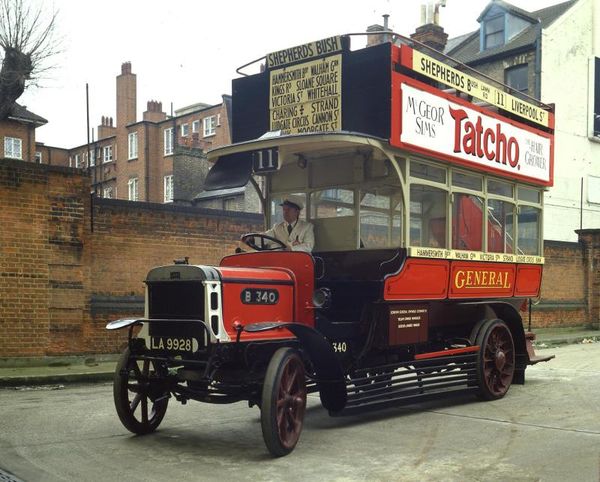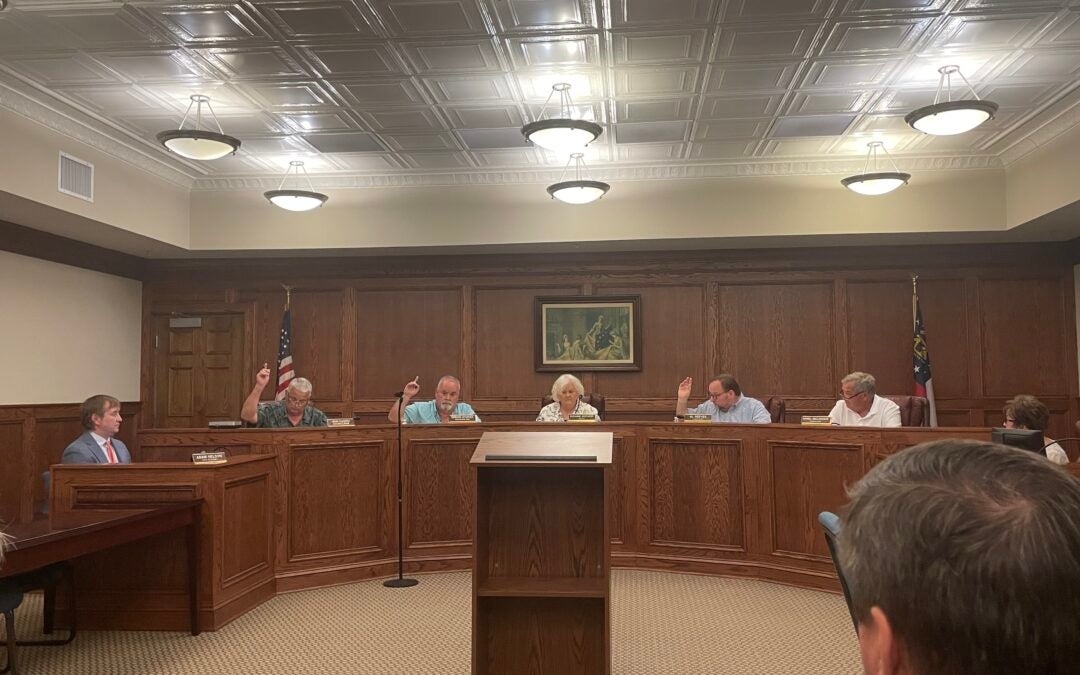For almost a decade, folks on the roadways would occasionally see a rather odd looking, bright red double-decker bus owned and operated by the Trotter Realty Co cruising along.
The bus could be seen trolling neighborhoods where real estate agents and prospective clients would ride around on Sundays looking at new homes on the market and, of course, it was a fixture every time there was a parade.
The bus certainly stood out as it looked like something straight out of Swinging London. Today, we might say the bus looked more at home as a prop in an Austin Powers movie rather than on the streets of Augusta.
“Grooooovy Baby!!”
At Christmastime, the bus would be decorated with giant candy canes in the windows.
According to William Trotter, he believes that his father, Bill, purchased the vehicle on a whim.
“My father took a trip to London in 1968, and I think he just became enamored with the thing and bought it at a surplus auction. He thought it would be an excellent way to market the business,” William Trotter said.
After buying the bus, Trotter had it shipped to New York, where it then made its way to its new home in Augusta.
The marketing scheme definitely worked; according to Augusta Magazine, in the 1970s and 1980s, Trotter’s real estate firm became the largest realty company in the state of Georgia outside of Atlanta.
While the bus was known simply as the “Trotter Bus,” it was actually a Routemaster that was manufactured by the Associated Equipment Company (AEC) for use in public transportation.
Trotter says that his father remarked that the bus was actually a rare version of the famous London buses, but he couldn’t recall exactly what made it rare. Considering that the Trotter Bus had one million miles on the odometer when it was purchased by the elder Trotter, it is likely that it was a first generation model.
The difference would be like having an 1876 first printing of “The Adventures of Tom Sawyer,” by Mark Twain, than a subsequent year after the book became famous.
First gen Routemasters were developed from the drawing boards to the streets within two years, which was an extremely speedy development process and the company built less than 3,000 of the first generation models from 1956 to 1958.
In the early 1950s, Londoners were still rebuilding after World War II, the only buses that were not destroyed in the Battle of Britain were worn out London General Omnibus Company lorries from the 1930s. Those buses were also two tiered, but the top deck was open air, which was not very practical in rainy London.

Those early buses also had an extremely limited capacity, meaning that fares were too high for most Londoners; so the London city government tasked AEC with developing a prototype that was fuel efficient, could easily navigate London’s notoriously narrow roadways and could seat up to 70 passengers as well as a driver and conductor.
According to the Routemaster Association, the buses employed a 9.6 liter diesel engine rated at 115 horses. At 11 tons fully loaded, the bus’s aluminum construction made them much lighter than a complete steel version and they got surprisingly good fuel economy for such a behemoth.
While the buses may have looked rather top-heavy, William Trotter says he was able to drive the bus once and it was remarkably stable.
“The thing looked like it could tip over on a turn, but it never felt that way behind the wheel, it was actually pretty easy to drive,” Trotter said.
For Trotter, the bus in Augusta served its purpose for many years, but with the fuel crisis’s of the 1970s, and its mechanical age beginning to show, Trotter decided to donate the long-parked bus to the Augusta Museum of History. However, instead of going on display, due to space limitations at the museum, the museum either sold or donated it out to another museum.
From there, the Trotter Bus vanished into Augusta lore, no one knows where the red double-decker ended up. However, the Routemaster Association claims that out of the original 2,876 first gen buses built, 1,230 are accounted for, so Augusta’s icon of the past might still be out there and in working order.
Dennis Trotter, principal partner of Jordan Trotter Realty, followed in his grandfather’s footsteps in real estate and says he remembers playing in the bus as a child. Trotter says that not only has the bus vanished from the streets, there are no known photographs of the bus from its Augusta heyday, except perhaps in attics that have been unexplored.
“My grandmother died four years ago and when we were cleaning out, we didn’t find any,” Dennis Trotter said.
Scott Hudson is the Senior Investigative Reporter and Editorial Page Editor for The Augusta Press. Reach him at scott@theaugustapress.com











